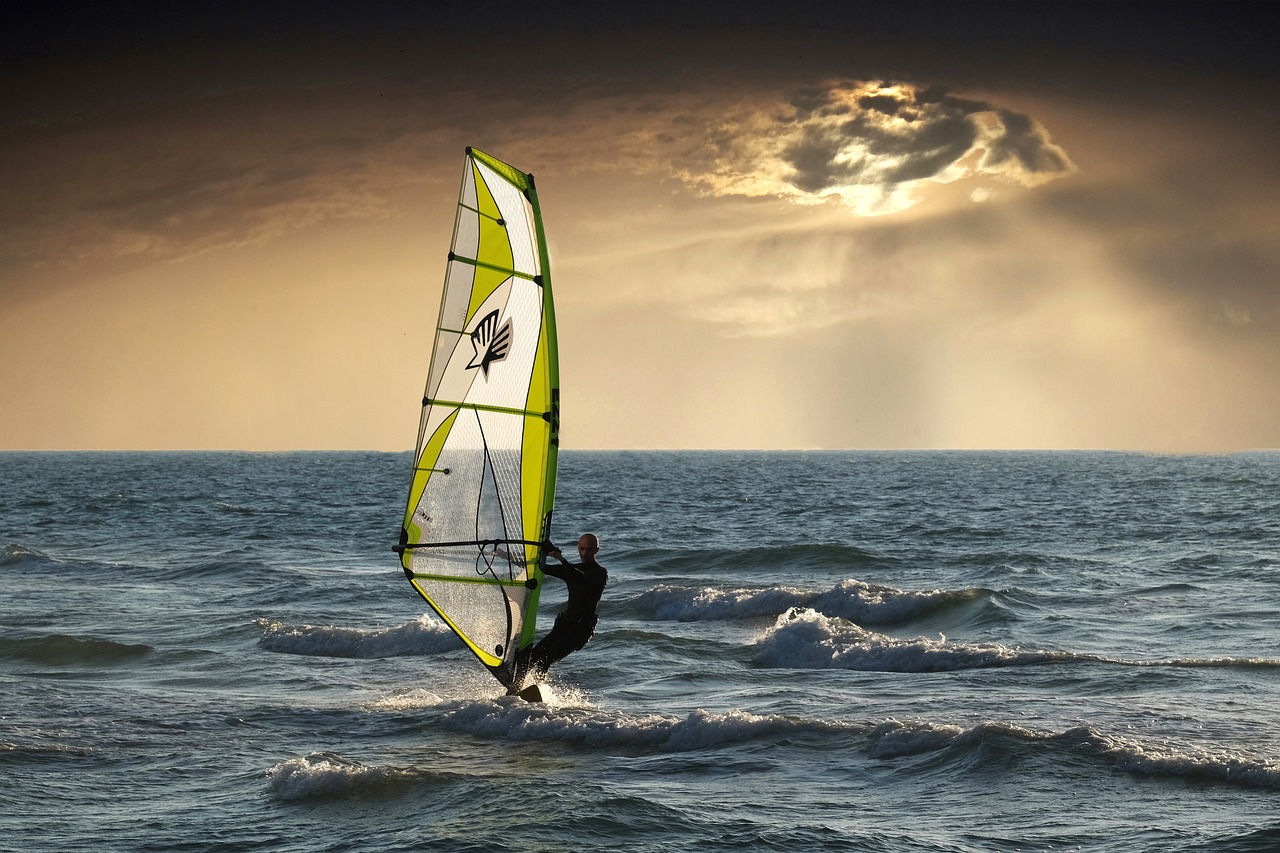Wing foil, a water sport that has taken the aquatic adventure world by storm, represents a harmonious blend of windsurfing, kitesurfing, and standup paddleboarding (SUP). At its core, wing foiling involves a surfer standing on a hydrofoil board while holding onto a handheld inflatable wing. The wing captures the wind, propelling the board across the water’s surface. What sets wing foiling apart is the hydrofoil attached to the bottom of the board, which lifts the board off the water as speed increases, allowing for a smooth, gliding sensation akin to flying just above the surface.
This unique combination of elements from various water sports makes wing foil not only thrilling but also versatile, offering an accessible entry point for beginners while still presenting challenges for seasoned water sports enthusiasts. The simplicity of the gear – essentially just a board, a hydrofoil, and a wing – belies the skill required to balance and maneuver, making mastery of wing foiling a rewarding pursuit.
The evolution and accessibility of wing foiling
Wing foiling is relatively new to the scene of water sports, having gained prominence in the late 2010s. Despite its recent development, it has rapidly evolved, with equipment becoming more sophisticated and user-friendly. Innovations in wing design, materials, and hydrofoil technology have made the sport more accessible to a wider range of skill levels and physical abilities.
The appeal of wing foil lies in its versatility. It can be practiced in various conditions, from light to strong winds, and does not require waves, making it possible on lakes, rivers, and the ocean. This accessibility has contributed to its growing popularity, with many surf shops now offering wing foil gear and lessons. The sport’s learning curve is relatively steep compared to traditional surfing, but the thrill of gliding above the water and the potential for aerial maneuvers keep enthusiasts hooked and eager to improve.
The future of wing foiling
As wing foil continues to carve out its niche within the water sports community, its future looks bright. The sport’s inherent connection with nature, reliance on wind power, and minimal environmental impact resonate with the growing global emphasis on sustainability. Furthermore, the ongoing development of lighter, more durable, and more efficient equipment is set to lower barriers to entry, making wing foiling even more accessible to newcomers.
Competitive wing foiling is also gaining traction, with events and competitions starting to emerge on the international scene. These competitions not only showcase the incredible skill and athleticism required in the sport but also foster a sense of community among participants. As techniques and equipment continue to evolve, the boundaries of what is possible in wing foiling will expand, ensuring its place in the pantheon of modern water sports for years to come.
In sum, wing foil is more than just a passing trend in the world of water sports. It’s a testament to the human desire for innovation, adventure, and harmony with the natural world. As it continues to evolve, it promises to bring even more people into the fold, united by the thrill of gliding across the water propelled by nothing but the wind.


